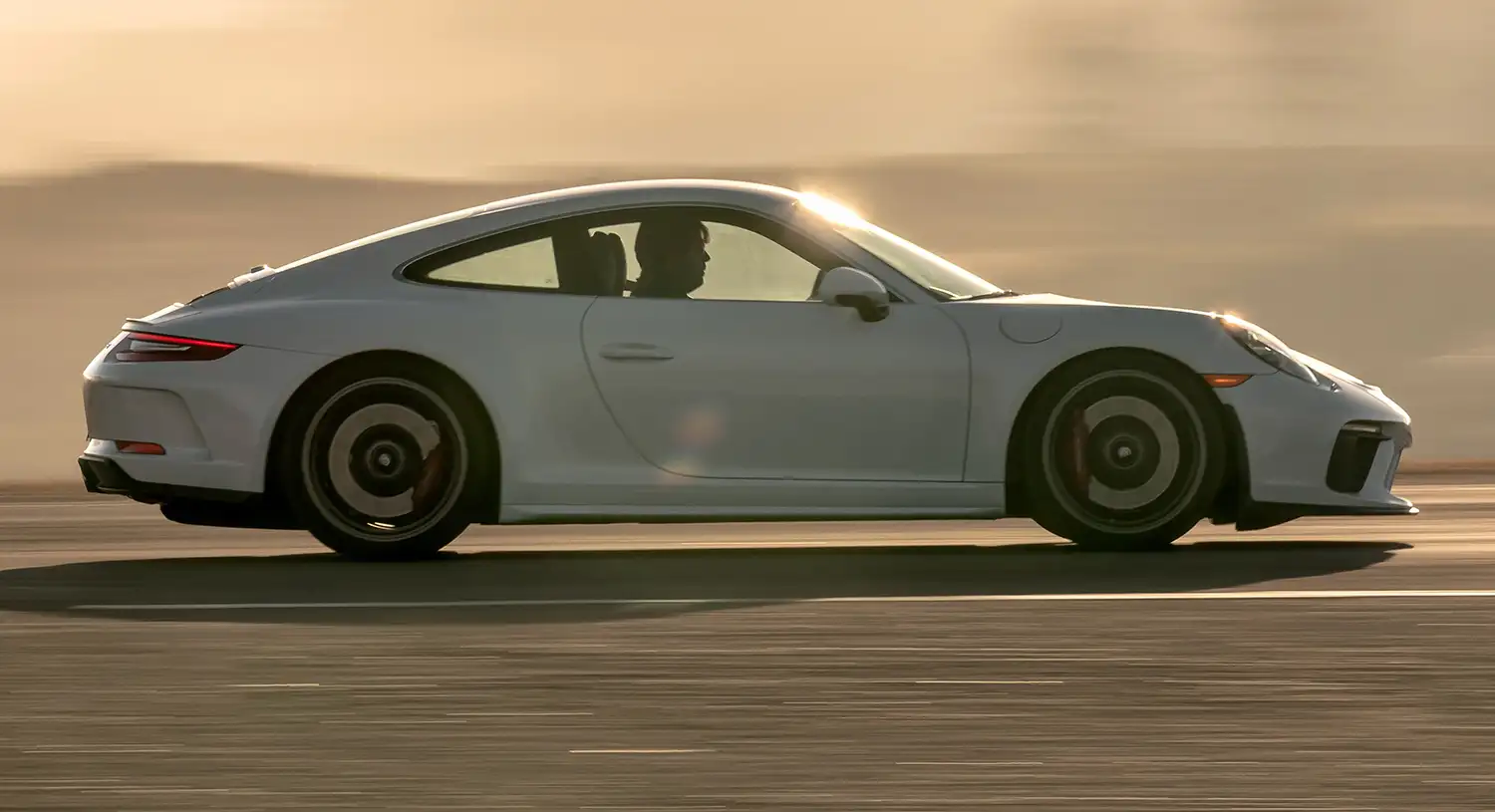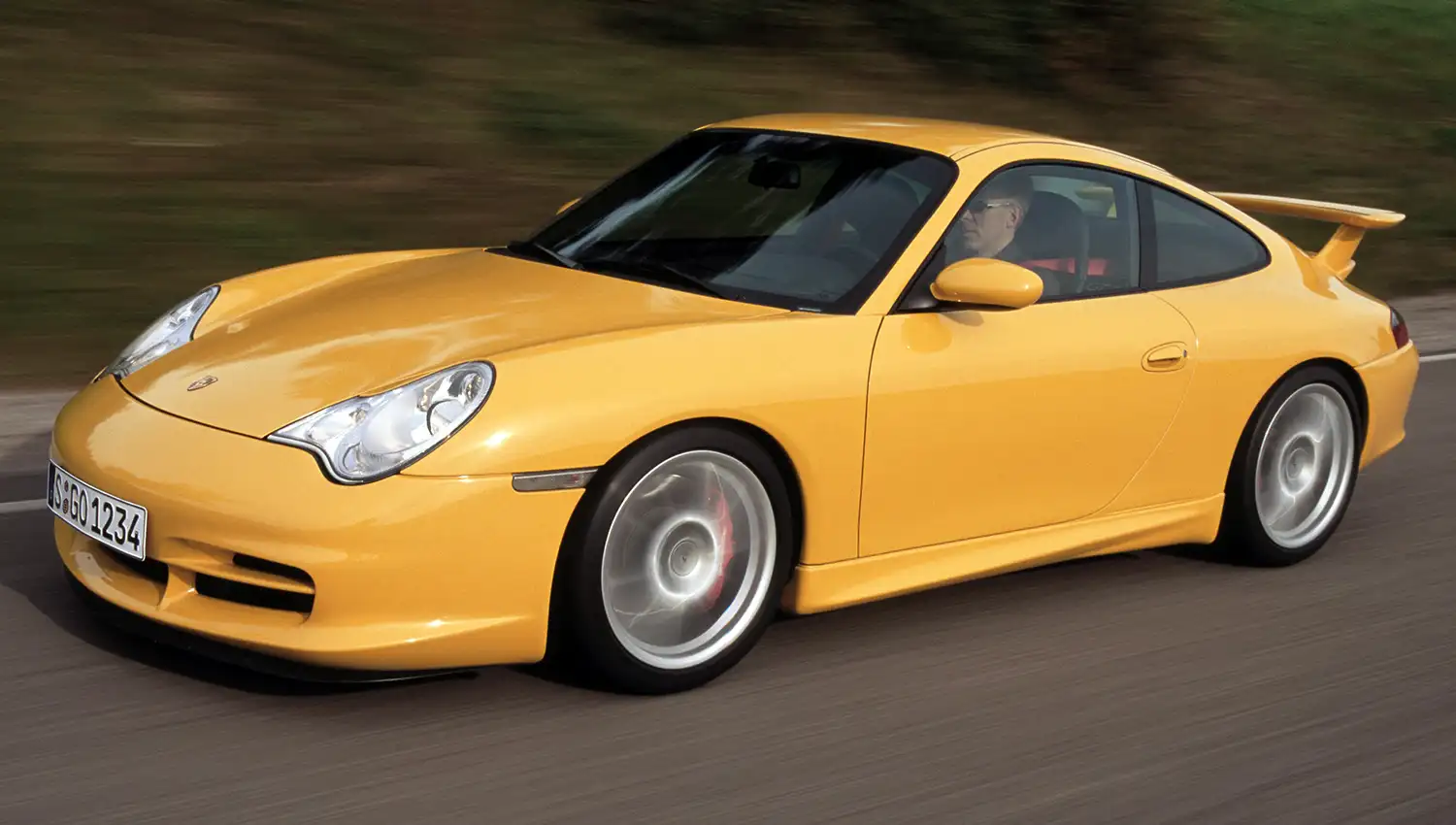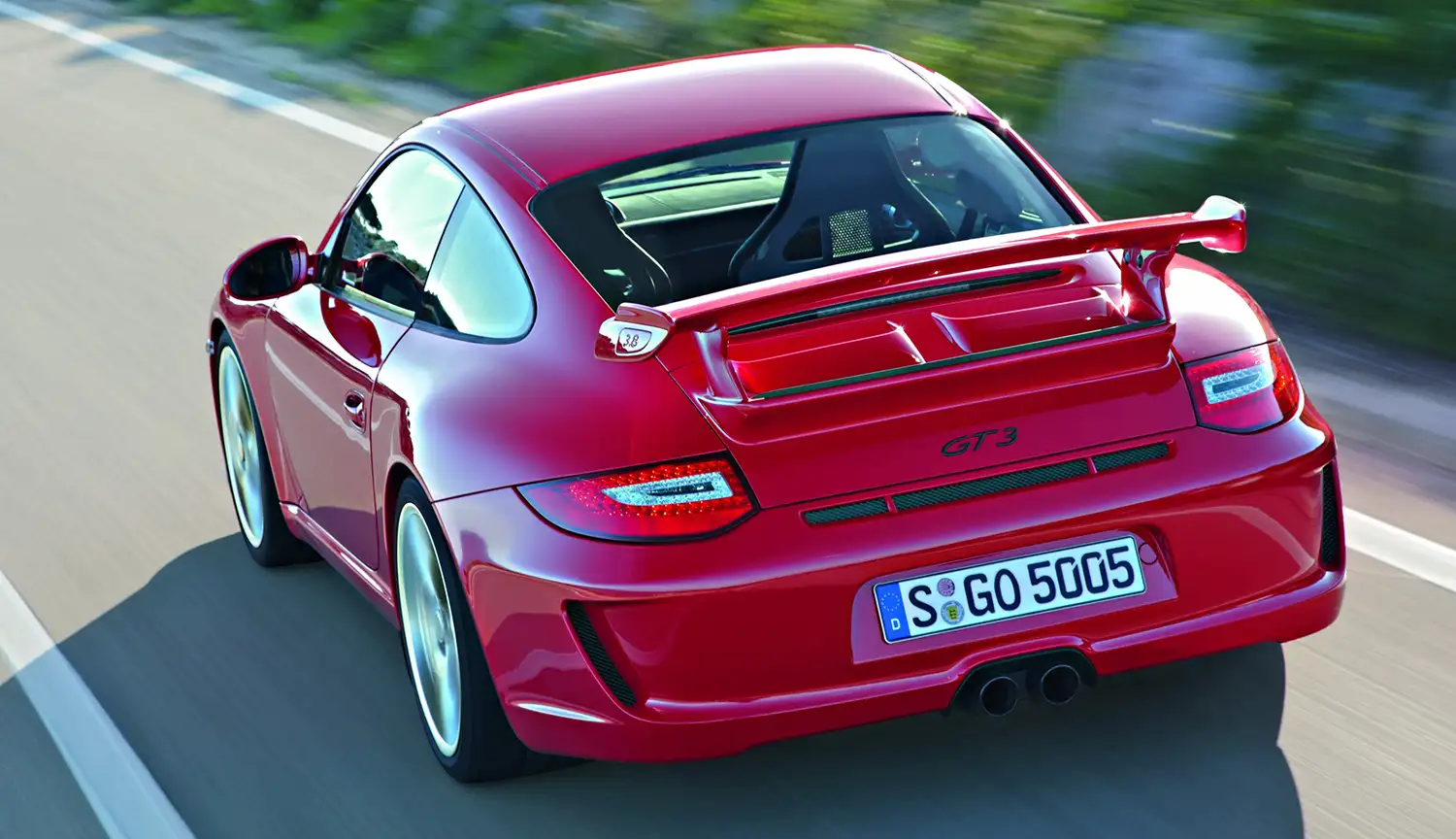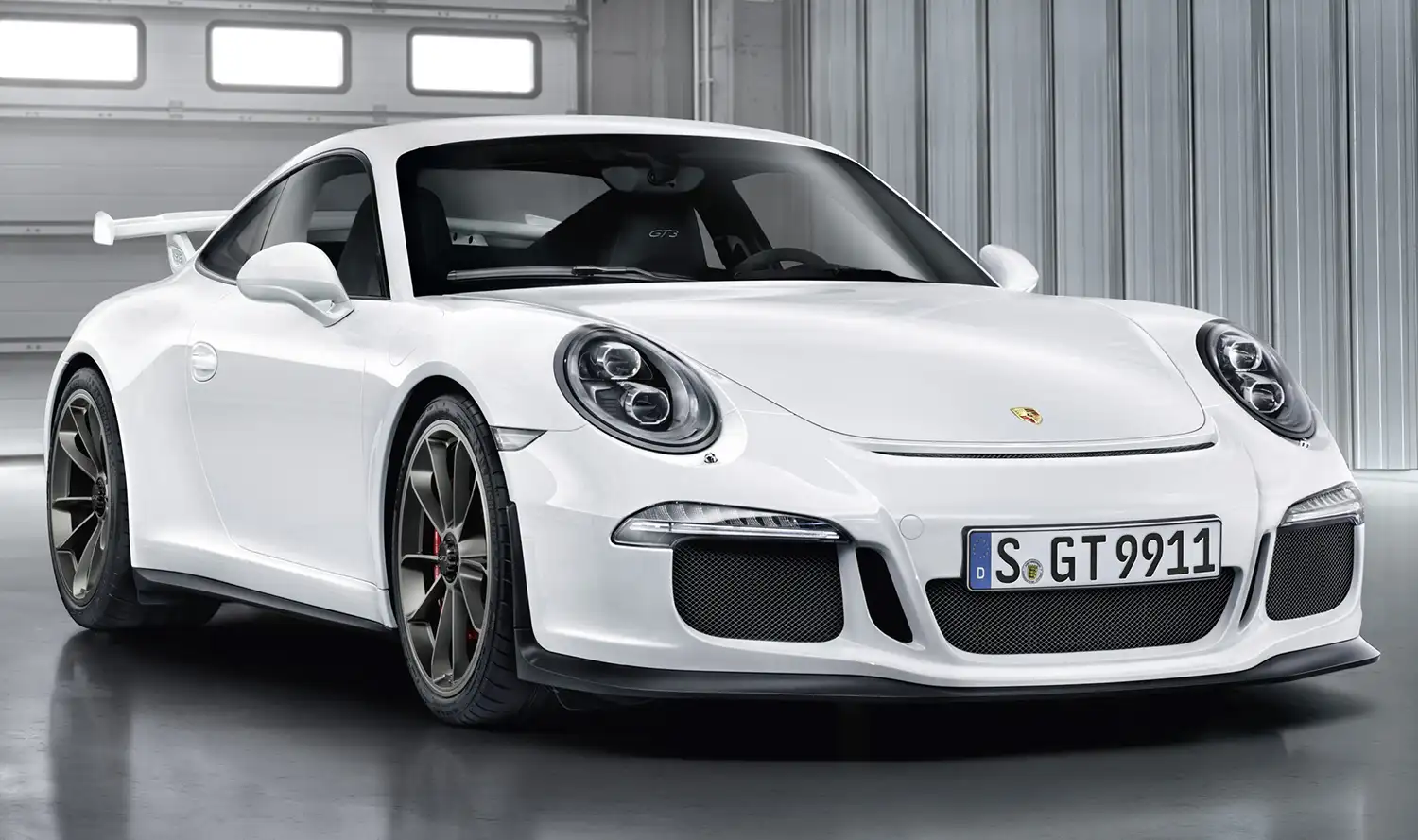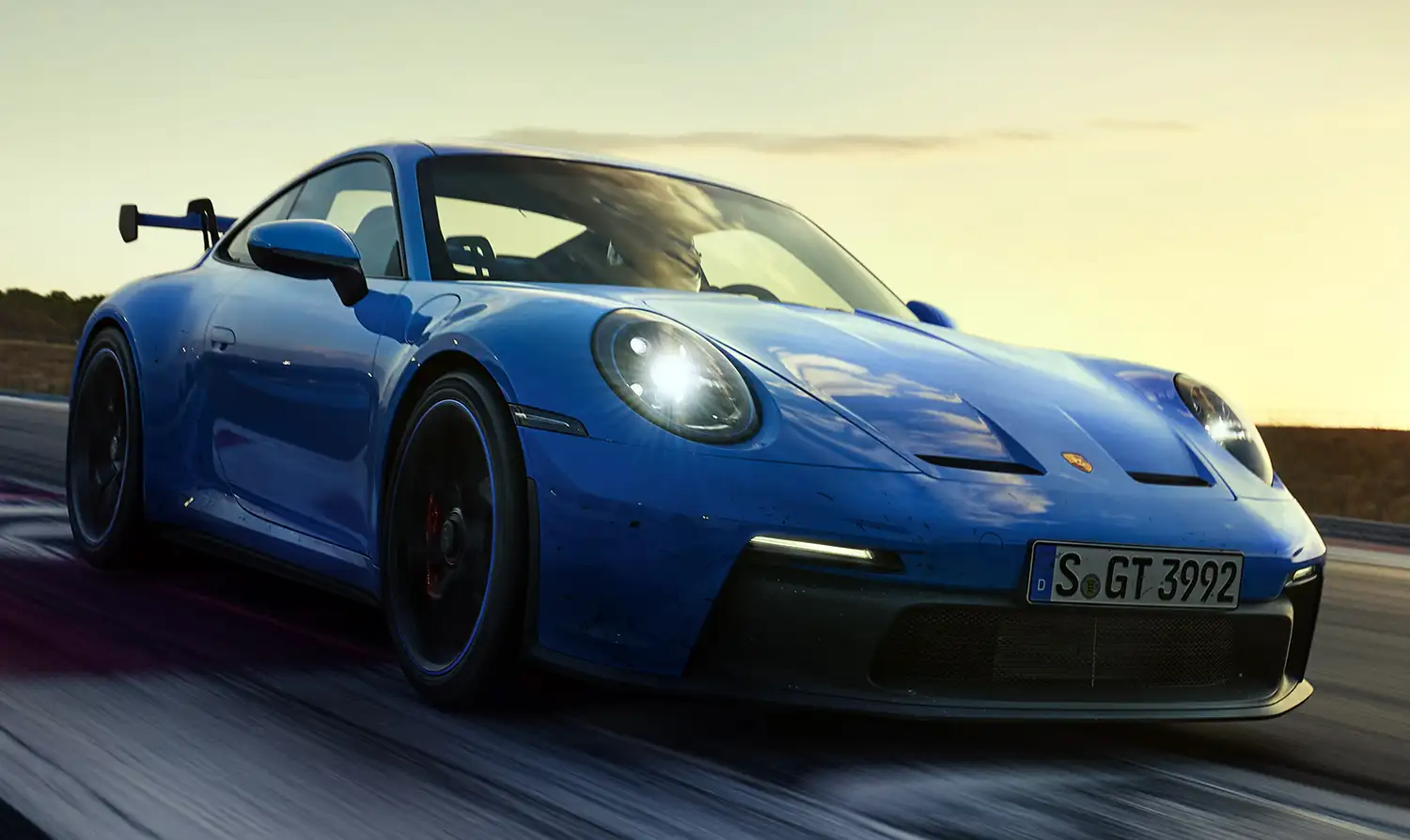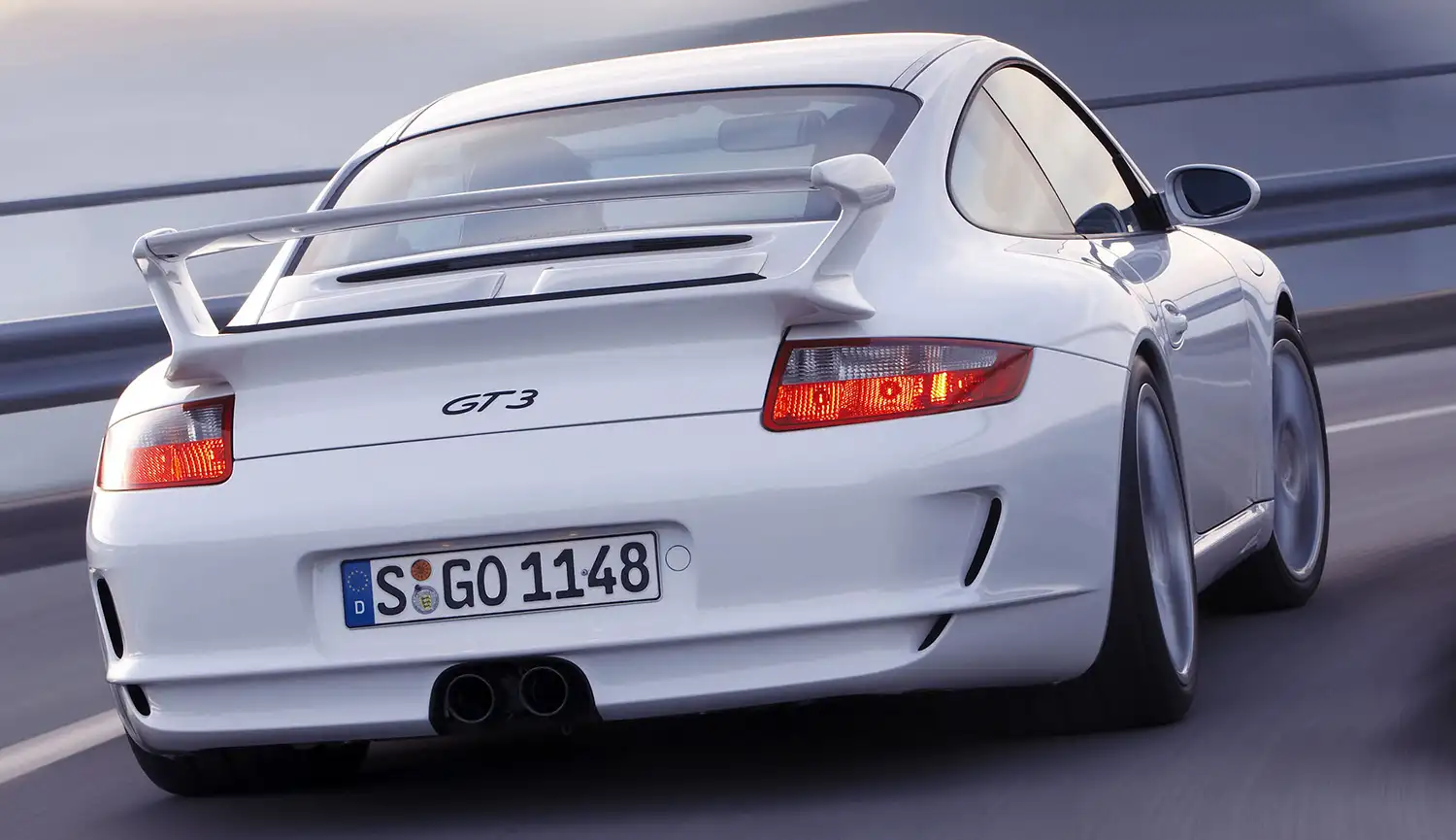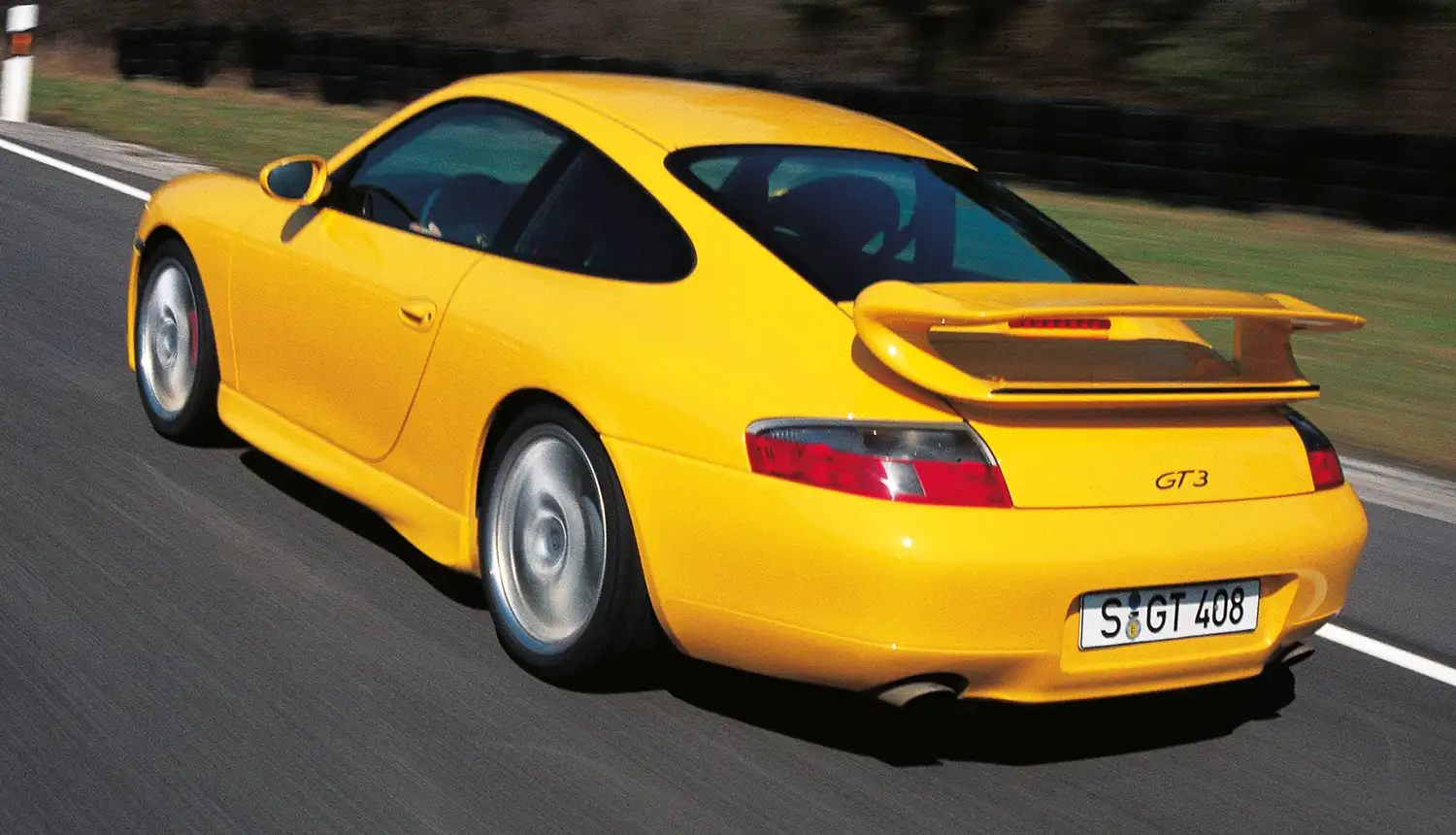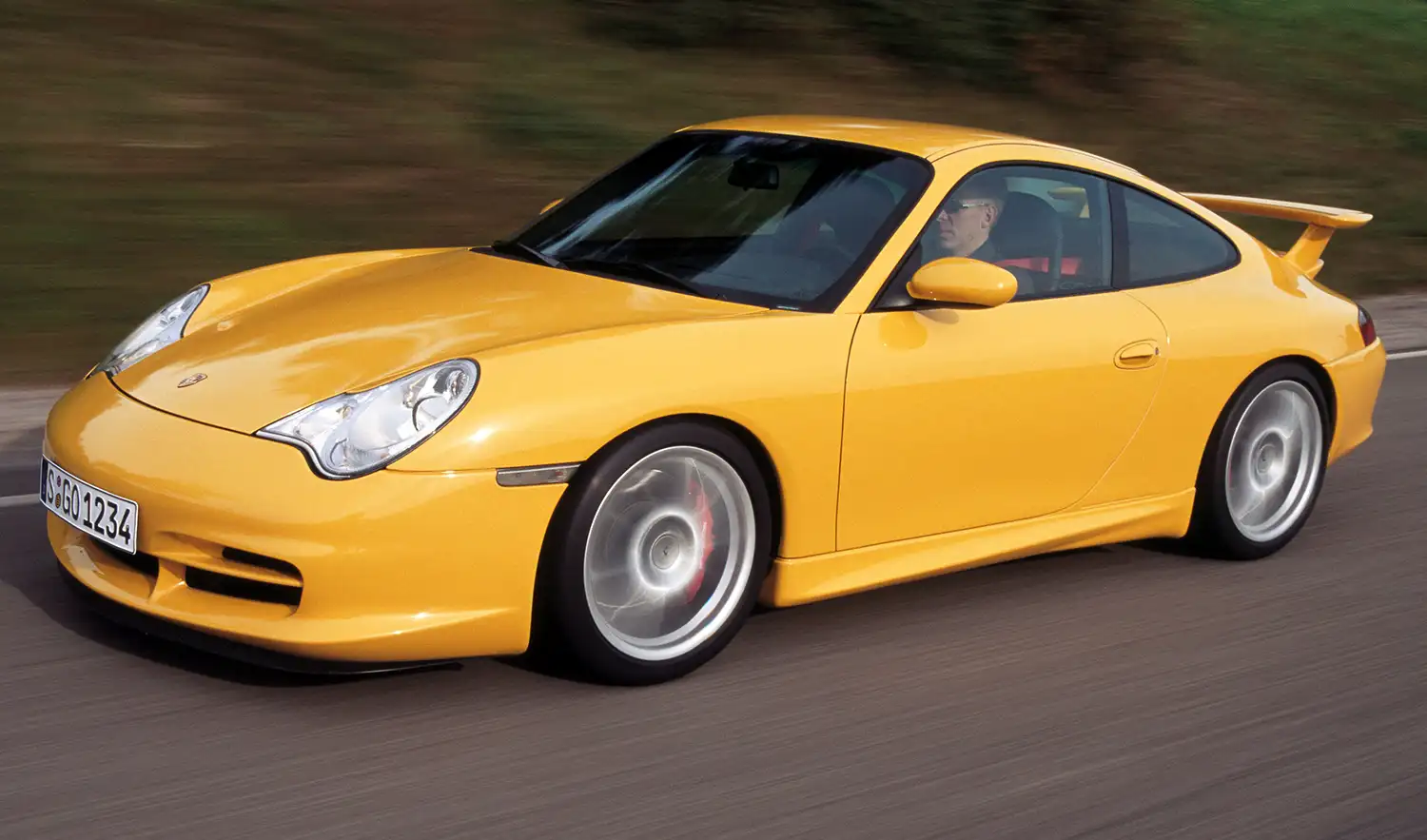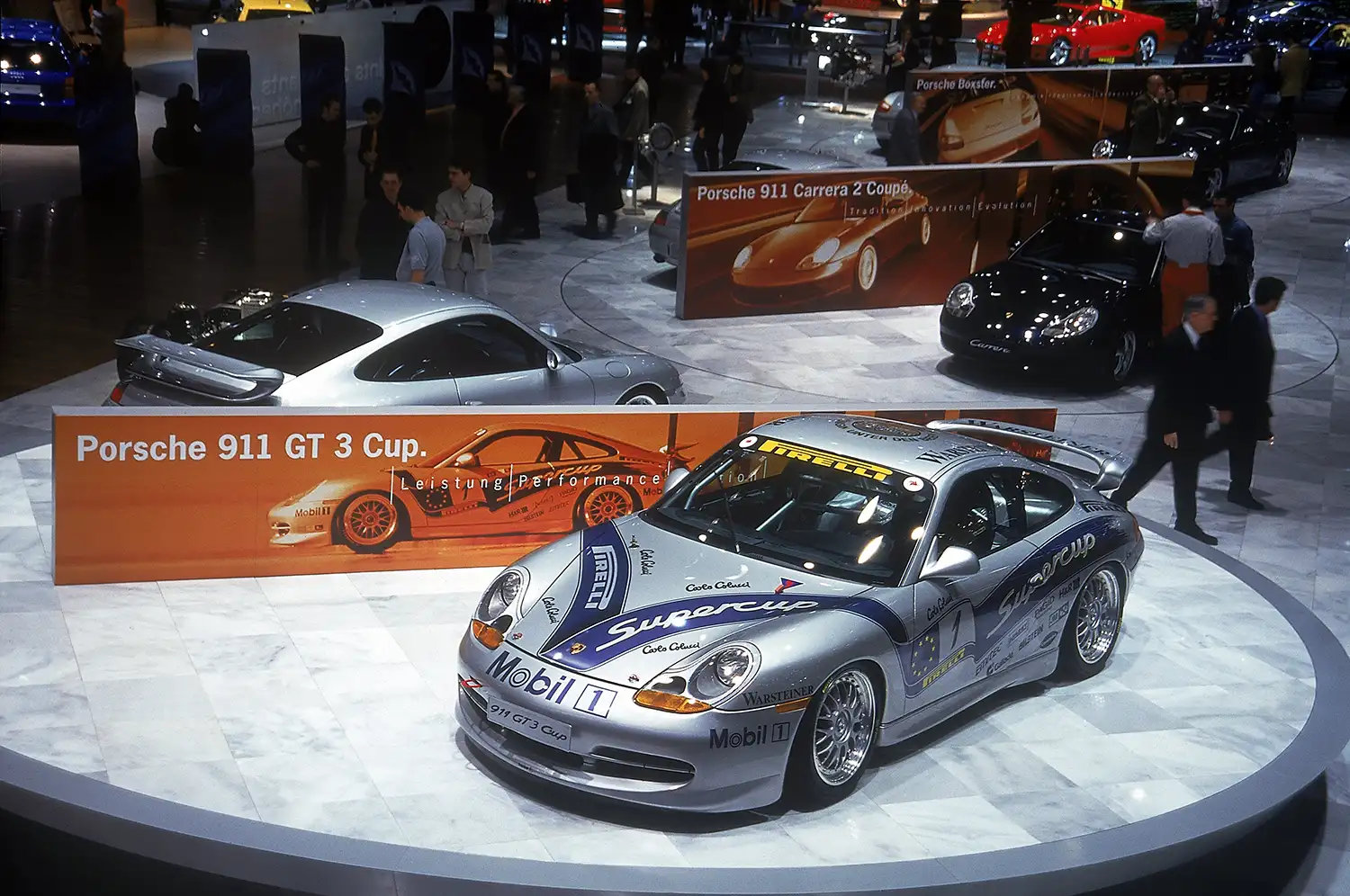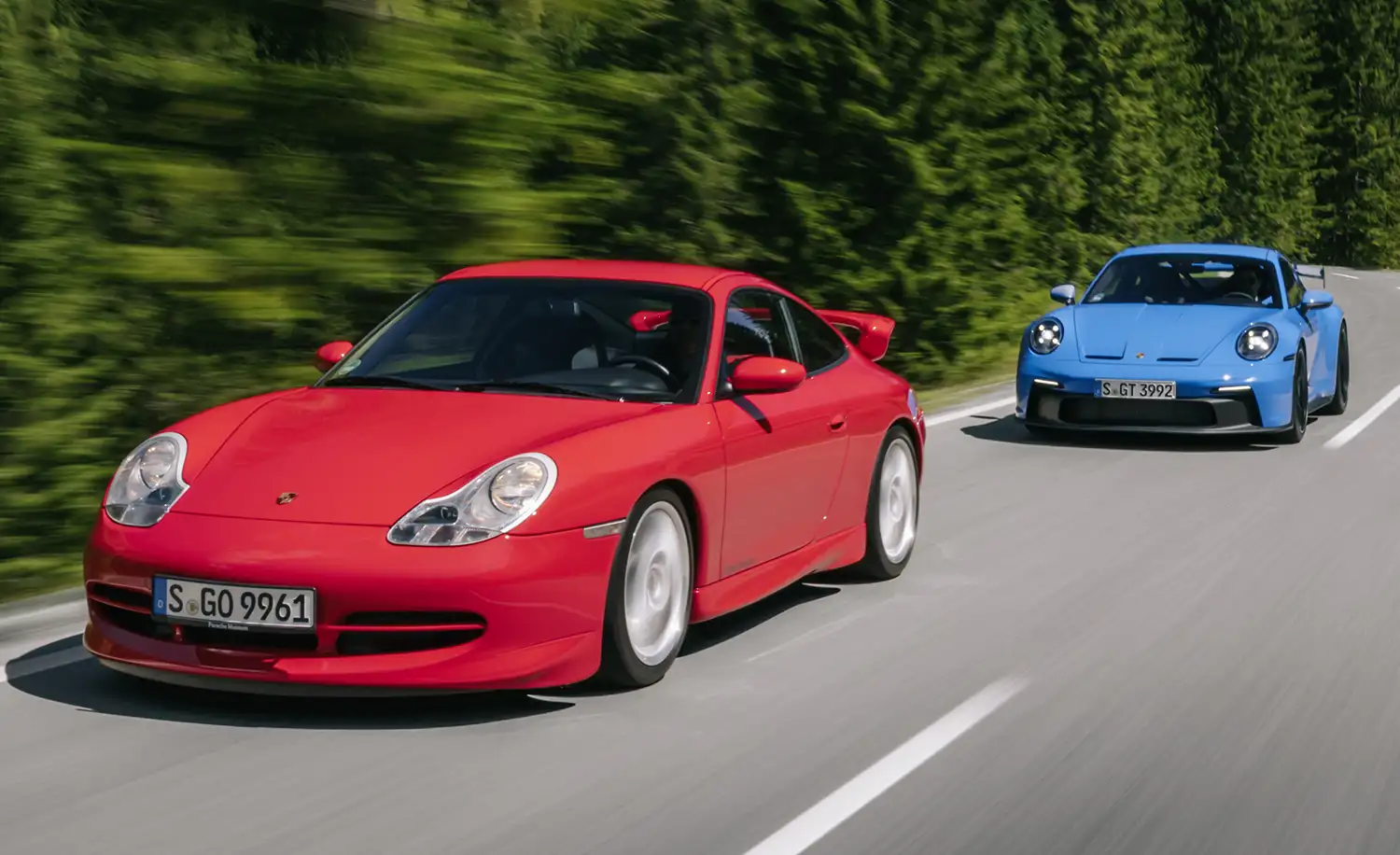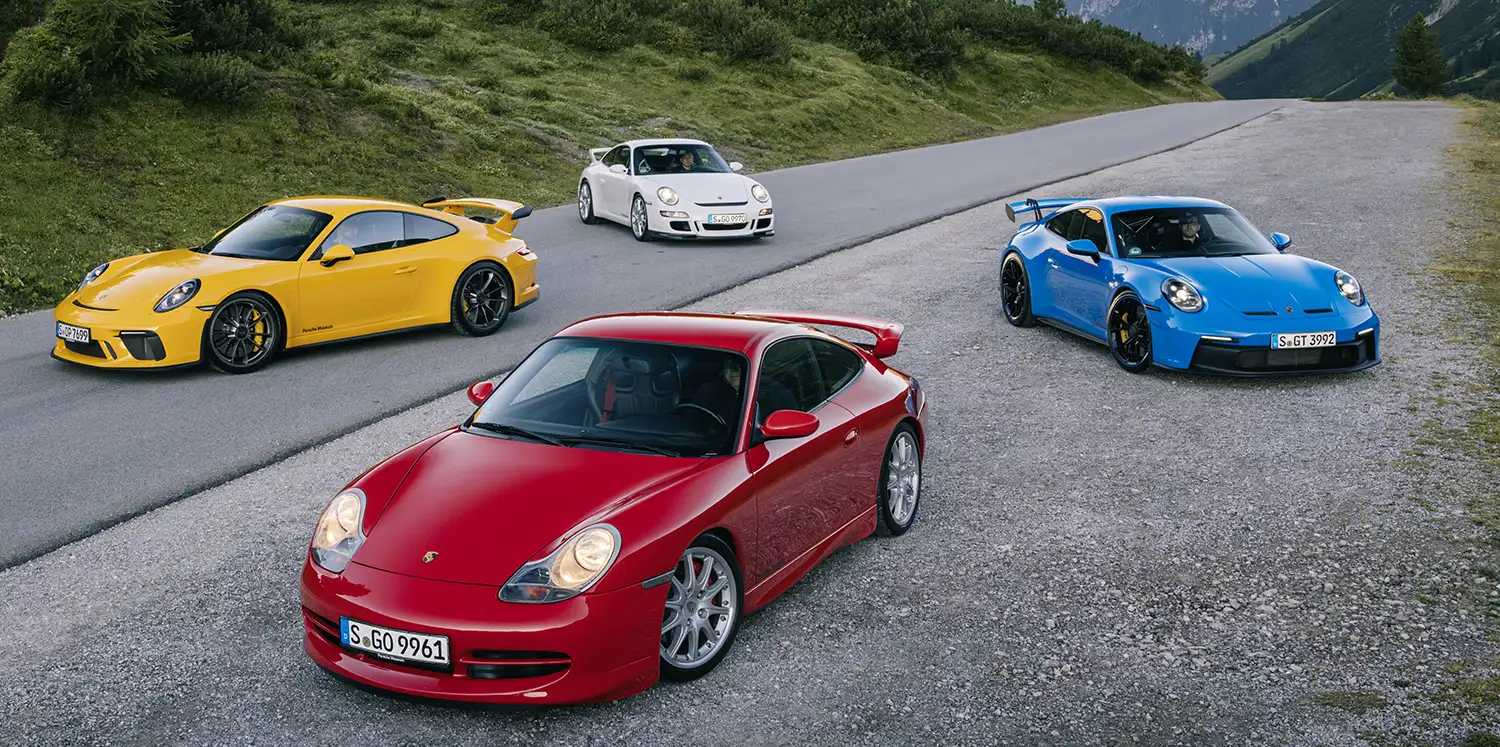
Twenty-five years ago, Porsche introduced a new model that would go on to redefine road performance with motorsport technology: the 911 GT3. Since its debut in 1999, the 911 GT3 has embodied Porsche’s relentless pursuit of track performance, setting benchmarks for speed, agility, and precision. Rooted in the brand’s racing heritage, the GT3 has become synonymous with thrilling driving experiences, merging raw power with advanced aerodynamics and lightweight engineering.
The Inception of a Legend
The original 911 GT3 launched in 1999 as part of the 996 generation, revolutionizing sports cars by bringing track-inspired technology to the streets. Powered by a 3.6-liter naturally aspirated flat-six engine derived from the Le Mans-winning 911 GT1 race car, the first GT3 packed 360 horsepower and achieved a top speed of 187 mph. It was the first production car to lap the Nürburgring-Nordschleife in under eight minutes, clocking in at 7:56.33. The combination of its reduced ride , lightweight construction, and advanced aerodynamics established the GT3’s reputation as a road-legal track machine.
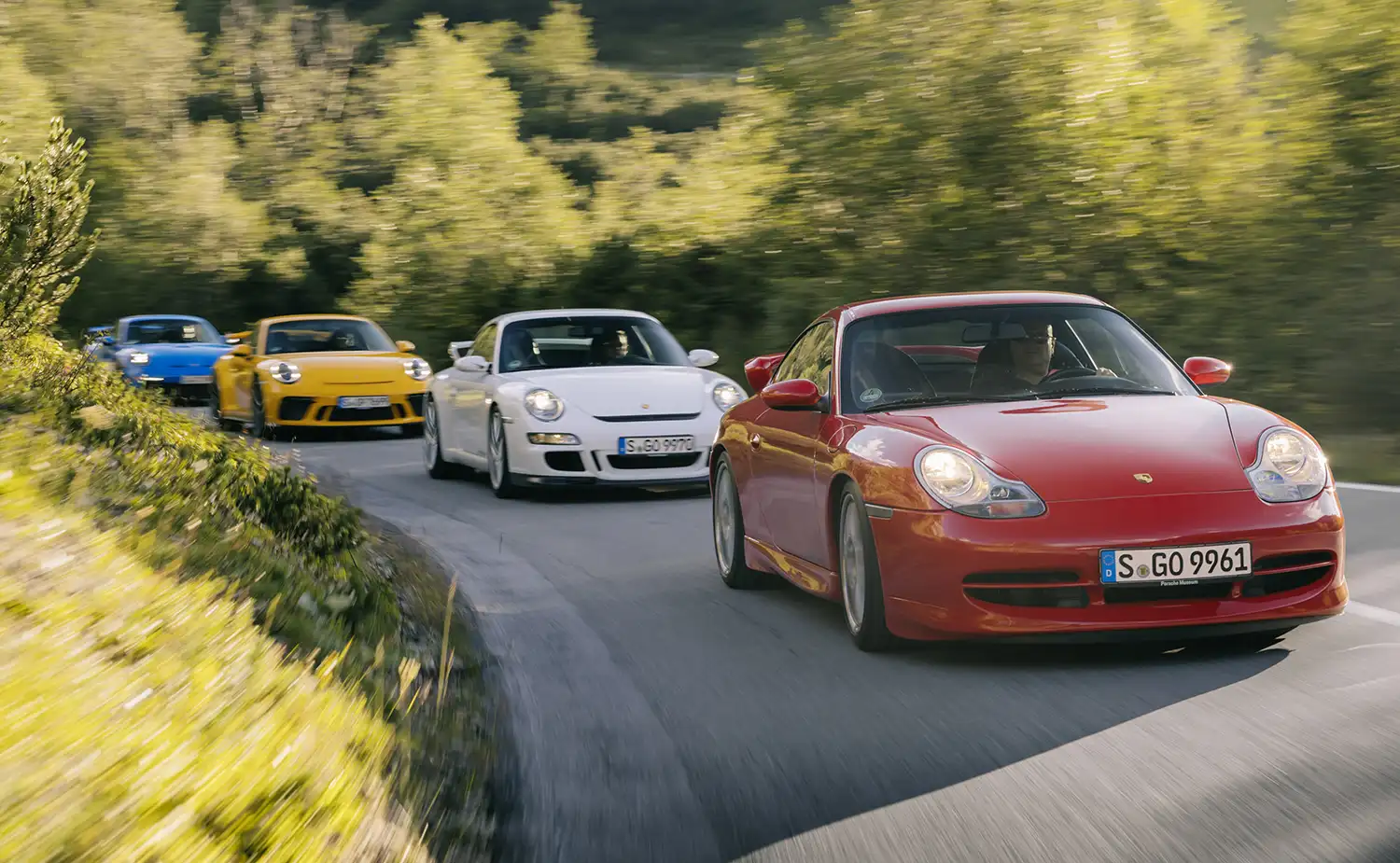
Expanding to New Markets
In 2004, Porsche brought the second-generation 911 GT3 to North America. With updated styling, a new 381-hp engine, and a revised suspension, the GT3’s performance escalated. Featuring titanium connecting rods, lighter pistons, and the VarioCam variable camshaft adjustment system, the new engine revved up to 8,200 rpm, launching the car from 0 to 60 mph in 4.3 seconds. The car’s increased agility, along with the introduction of optional Porsche Ceramic Composite Brakes (PCCB), took its track prowess to new s.
Evolving Performance
The 2007 911 GT3, based on the 997 generation, delivered even more exhilarating performance. With 415 hp and a redline of 8,400 rpm, the 997 GT3 hit a top speed of 193 mph and sprinted from 0 to 60 in 4.1 seconds. This generation introduced Porsche Active Suspension Management (PASM), further enhancing the car’s handling by electronically adjusting the dampers. The addition of a traction control system provided greater stability, particularly in challenging driving conditions, while the introduction of center-mounted tailpipes and a “SPORT” mode underscored the GT3’s motorsport DNA.
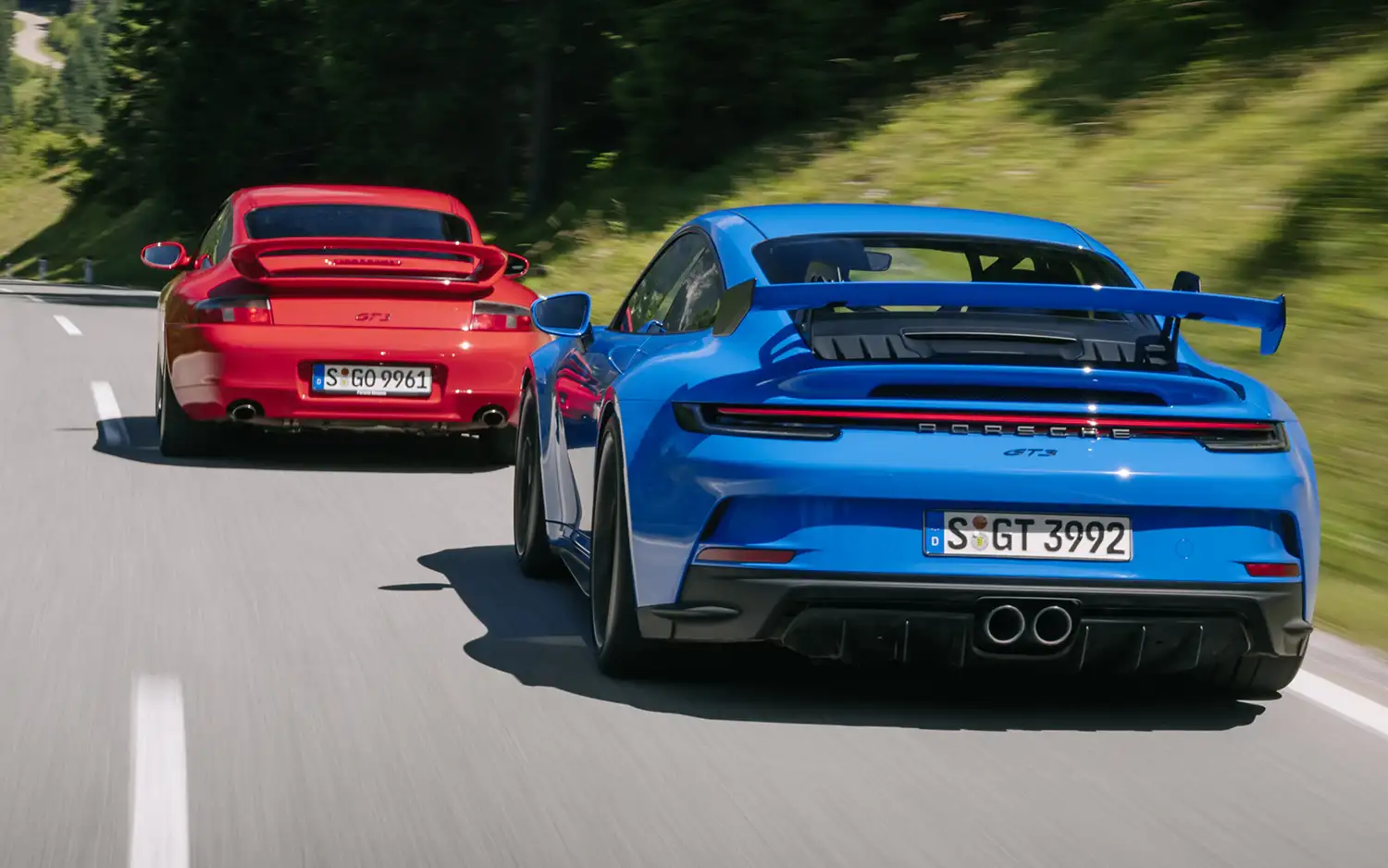
The 991 Generation: A Revolution in Tech
In 2013, Porsche took the GT3 to another level with the 991 generation. The 911 GT3 debuted with a seven-speed dual-clutch transmission (PDK) and a 475-hp 3.8-liter flat-six engine that revved to a staggering 9,000 rpm. Capable of hitting 60 mph in just 3.3 seconds, the 991 GT3 also featured rear-axle steering, further improving its agility and precision. The car’s aerodynamics were refined to deliver 20 percent more downforce than its predecessor, allowing it to lap the Nürburgring in just 7 minutes and 25 seconds.
The Latest Evolution: 992 Generation GT3
Today, the 911 GT3 continues to break boundaries. The current 992-generation GT3 clocked a Nürburgring lap time of 6:59.93, proving its capabilities on one of the world’s most demanding circuits. Powered by a 4.0-liter flat-six engine with 502 hp, the car retains its naturally aspirated character, revving to 9,000 rpm and offering both a six-speed manual and the PDK transmission. For the first time, Porsche introduced a double-wishbone front axle for better camber stability during high-load cornering, along with cutting-edge aerodynamics like swan neck-mounted rear wings and adjustable diffusers.
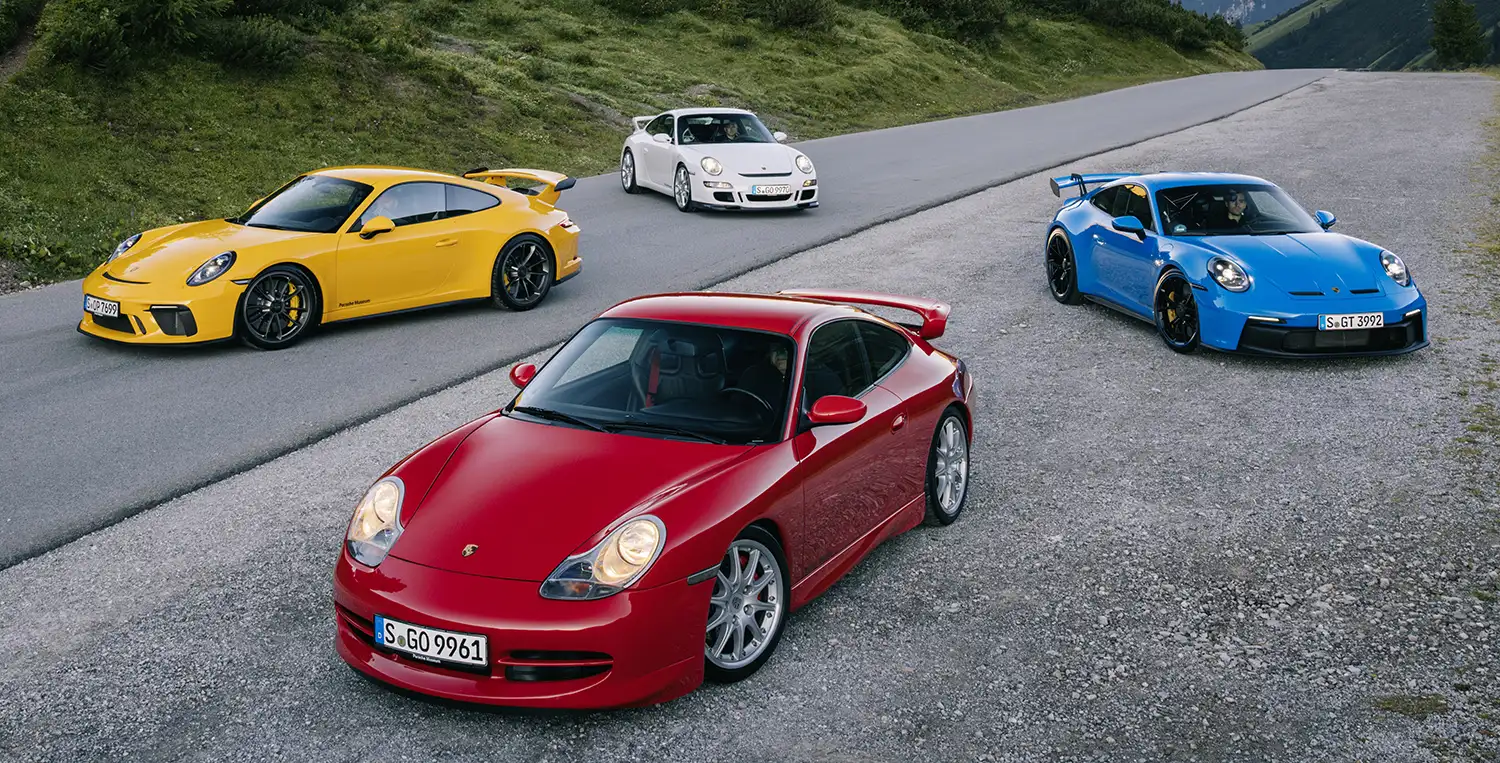
Porsche’s Commitment to Motorsport Excellence
From its inception, the Porsche 911 GT3 has been a testament to Porsche’s dedication to motorsport engineering. As Porsche continues to refine and innovate, the 911 GT3 remains at the heart of its sports car lineup, offering enthusiasts a pure, uncompromised driving experience that is as thrilling on the track as it is on the road.
The 911 GT3’s legacy continues to inspire, representing 25 years of Porsche’s relentless pursuit of excellence.
Source: Porsche
This article was crafted with assistance from Chatgpt
